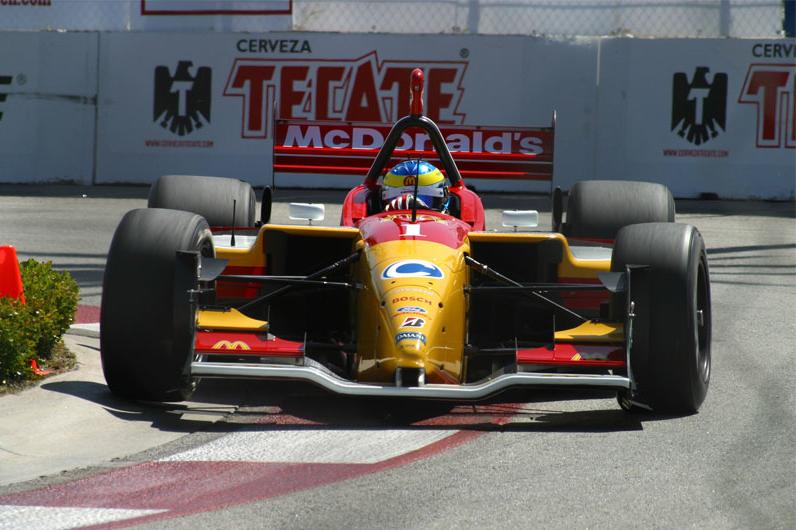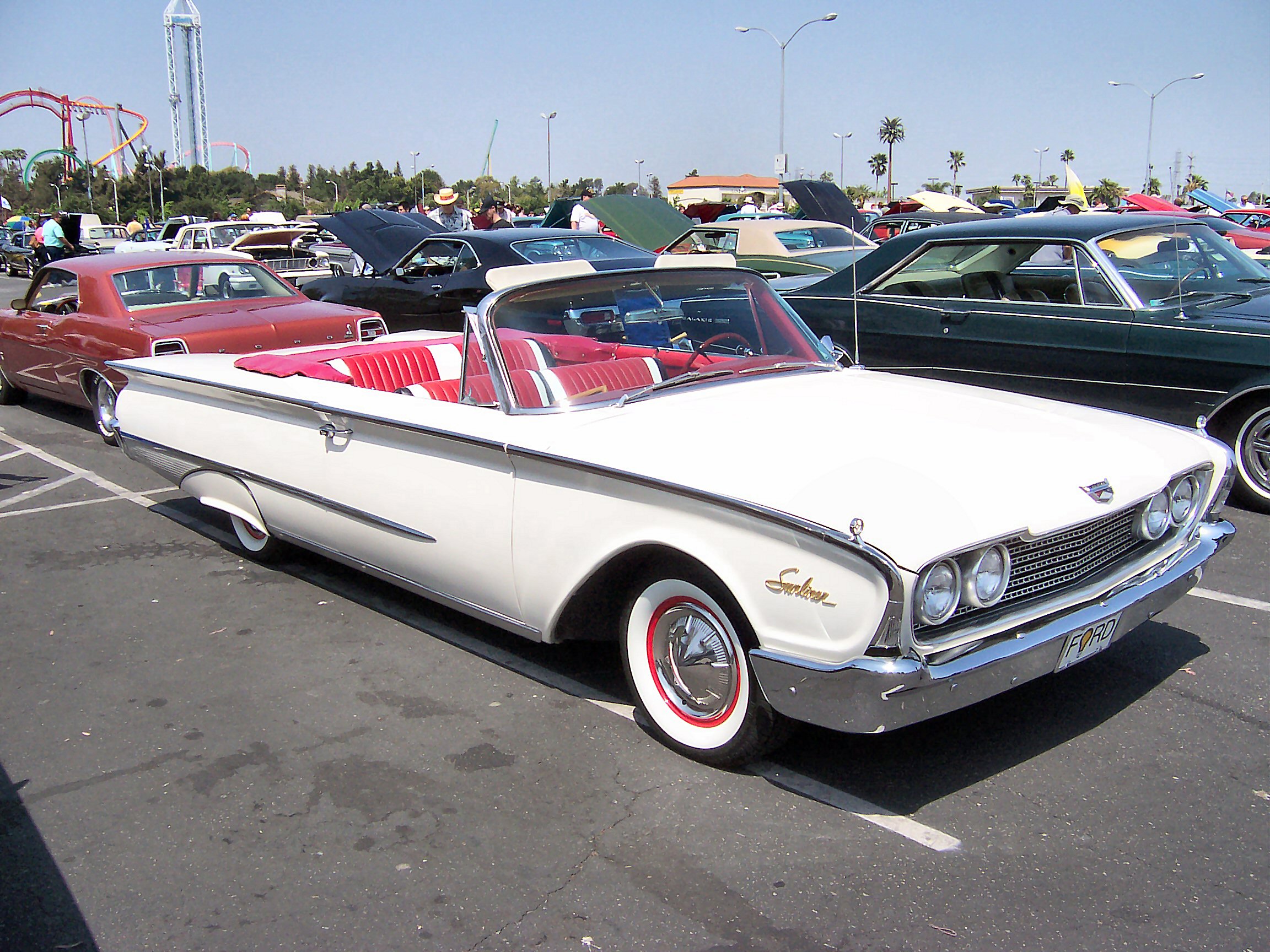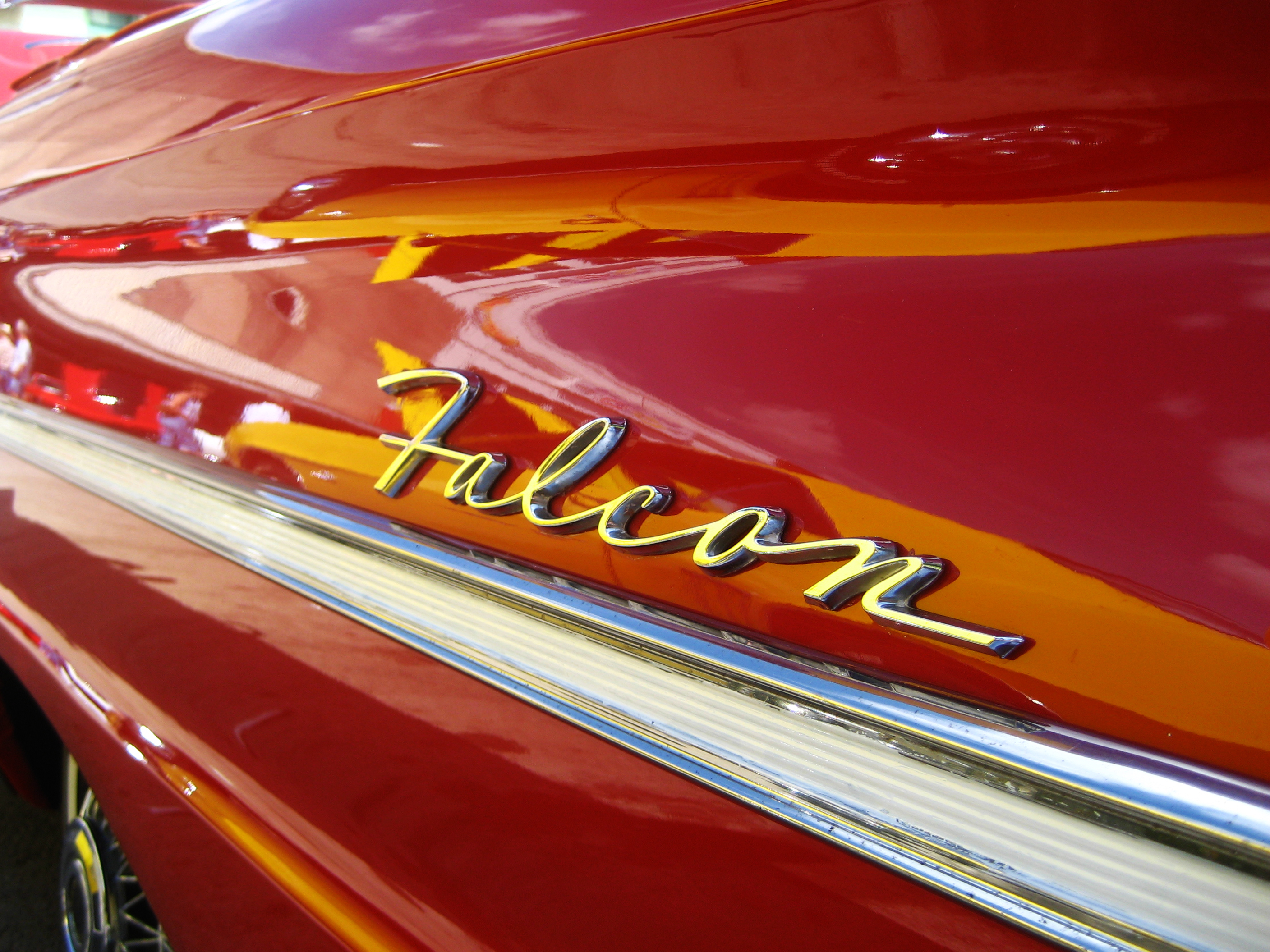|
Total Performance
Total Performance was a global Promotion (marketing), promotional advertising campaign conducted by the Ford Motor Company during the 1960s. It aimed to succeed in a variety of motorsport venues, and then emphasize performance in their mainstream vehicles with the interest generated. Motorsport The cream of Ford's efforts came on the race track and drag strip, which lent credence to the premise of their campaign. The Ford GT40 won overall in 24 Hours of Le Mans in 1966 24 Hours of Le Mans, 1966, 1967 24 Hours of Le Mans, 1967, 1968 24 Hours of Le Mans, 1968, and 1969 24 Hours of Le Mans, 1969, and chalked up numerous victories in other endurance races such as the 12 Hours of Sebring and 24 Hours of Daytona. Legendary engines, like the big-block Ford 427 engine, and the Ford-sponsored Cosworth DFV were products of this era. Ford engines powered hundreds of victories in Formula One, NASCAR, Champ Car, CART, and other racing series. Ford-powered Lola Cars, Lolas raced in the Can-Am ... [...More Info...] [...Related Items...] OR: [Wikipedia] [Google] [Baidu] |
Champ Car
Champ Car World Series (CCWS) was the series sanctioned by Open-Wheel Racing Series Inc., or Champ Car, a sanctioning body for American open-wheel car racing that operated from 2004 to 2008. It was the successor to Championship Auto Racing Teams (CART), which sanctioned the 'PPG Indy Car World Series from 1979 until dissolving after the 2003 season. Vehicles Champ Cars were single-seat, open-wheel racing cars, with mid-mounted engines. Champ cars had sculpted undersides to create ground effect and prominent wings to create downforce. The cars would use a different aerodynamic kit on the occasions they raced on an oval. With funds low, development was effectively frozen with a focus on developing a universal chassis, and the series generally ran on CART-spec 2002 Lola chassis from 2003 to 2006. The new chassis was developed by Panoz and debuted in 2007 as the Panoz DP01. The chassis was well received by drivers and fans. The series leased 750hp 2.65 L V-8 turbocharg ... [...More Info...] [...Related Items...] OR: [Wikipedia] [Google] [Baidu] |
Ford Thunderbolt
Ford commonly refers to: * Ford Motor Company, an automobile manufacturer founded by Henry Ford * Ford (crossing), a shallow crossing on a river Ford may also refer to: Ford Motor Company * Henry Ford, founder of the Ford Motor Company * Ford Foundation, established by Henry and Edsel * Ford Australia * Ford Brasil * Changan Ford * Ford Motor Company of Canada, Canadian subsidiary * Ford of Britain * Ford of Europe, the successor of British, German and Irish subsidiaries * Ford Germany * Ford India * Ford Lio Ho * Ford New Zealand * Ford Motor Company Philippines * Ford Romania * Ford SAF, the French subsidiary between 1916 and 1954 * Ford Motor Company of South Africa * Fordson, the tractor and truck manufacturing arm of the Ford Motor Company * Ford Vietnam * Ford World Rally Team (aka Ford Motor Co. Team prior to 2005), Ford Motor Company's full factory World Rally Championship team (1978–2012) * Ford Performance * Henry Ford & Son Ltd, Ireland * List of Ford vehicles, model ... [...More Info...] [...Related Items...] OR: [Wikipedia] [Google] [Baidu] |
Shelby Mustang
The Shelby Mustang is a high-performance variant of the Ford Mustang built by Shelby American from 1965 to 1967 and by the Ford Motor Company from 1968 to 1970. In 2005, Ford revived the Shelby nameplate for a high-performance model of the fifth-generation Ford Mustang. 1st generation (1965–1970) 1965–1966 Shelby GT350 The 1965–1966 cars were the smallest and lightest of the GT 350 models. These cars are often called "Cobras", which was the Ford-powered AC-based two-seat sports car also produced by Shelby American during the same period. Both models use the Cobra emblem, similar paint scheme, and the optional "Cobra" valve covers on many GT350s that were part of a marketing tie-in by Shelby, as well as one of his iconic symbols. All 1965–66 cars had the Windsor HiPo K-Code V8 engine, modified with a large 4-barrel Holley 715 CFM carburetor to produce at 6,000 rpm and of torque at 4,200 rpm. Marketing literature referred to this engine as the " ... [...More Info...] [...Related Items...] OR: [Wikipedia] [Google] [Baidu] |
Boss 429
The Boss 429 Mustang is a high-performance Ford Mustang variant that was offered by Ford in 1969 and 1970. Engine builder Jon Kasse currently reproduces the cylinder heads that make up the "boss 9" engine architecture. Overview The Boss 429 is recognized as being among some of the rarest and highly valued muscle cars to date.Marshall, Wal.The Amazing Boss 429" ''NZMustang.com,'' 10 April 2008. In total there were 1359 original Boss 429s made. The origin of the Boss 429 was to fulfil Ford's need to homologate the 429 semi-hemispherical engine for NASCAR racing. Ford was seeking to develop an engine that would better compete with the 426 Hemi from Chrysler in NASCAR's Grand National Division, now known as the NASCAR Cup Series. NASCAR's homologation rules required that at least 500 cars be fitted with this motor and sold to the general public. After much consideration, it was decided by Ford that the Mustang would be the car that would house this new engine. With the release ... [...More Info...] [...Related Items...] OR: [Wikipedia] [Google] [Baidu] |
Boss 302 Mustang
The Mustang Boss 302 is a high-performance variant of the Ford Mustang originally produced by Ford in 1969 and 1970, alongside its more powerful sibling the Boss 429 Mustang. Ford revived the name for another two year production run in 2012 and 2013. It was produced for the Trans Am racing series. First generation (1969–1970) The Camaro/Mustang rivalry had begun in 1967 with the introduction of the Chevrolet Camaro by General Motors. The Camaro was the largest threat to the lead Ford had in the " pony car" field, a market segment largely created by Ford with the introduction of the Mustang in mid-year 1964. The performance of the Mustang with 289 and 390 engines was not up to the Camaro, with its small block and big block V8. In an effort to improve the Mustang's image, Ford made a 428 Cobra Jet V8, and a Ford Boss 302 engine optional for the 1968 mid-year and 1969 models, respectively. The 1969–70 Boss 302 (Hi-Po) engine was created in 1968 for the SCCA's 1969 Trans-A ... [...More Info...] [...Related Items...] OR: [Wikipedia] [Google] [Baidu] |
Ford Mustang
The Ford Mustang is a series of American automobiles manufactured by Ford. In continuous production since 1964, the Mustang is currently the longest-produced Ford car nameplate. Currently in its sixth generation, it is the fifth-best selling Ford car nameplate. The namesake of the " pony car" automobile segment, the Mustang was developed as a highly styled line of sporty coupes and convertibles derived from existing model lines, initially distinguished by "long hood, short deck" proportions. Originally predicted to sell 100,000 vehicles yearly, the 1965 Mustang became the most successful vehicle launch since the 1927 Model A. Introduced on April 17, 1964 (16 days after the Plymouth Barracuda), over 400,000 units in its first year; the one-millionth Mustang was sold within two years of its launch. In August 2018, Ford produced the 10-millionth Mustang; matching the first 1965 Mustang, the vehicle was a 2019 Wimbledon White convertible with a V8 engine. The success of the ... [...More Info...] [...Related Items...] OR: [Wikipedia] [Google] [Baidu] |
Ford Galaxie
The Ford Galaxie is a full-sized car that was built in the United States by Ford for model years 1959 through to 1974. The name was used for the top models in Ford's full-size range from 1958 until 1961, in a marketing attempt to appeal to the excitement surrounding the Space Race. In 1958, a concept car was introduced called "la Galaxie" which incorporated the headlights into pods inline with the grille and a reduced front profile. For 1962, all full-size Fords wore the Galaxie badge, with "500" and "500/XL" denoting the higher series. The Galaxie 500/LTD was introduced for 1965 followed by the Galaxie 500 7-Litre for 1966. The Galaxie 500 prefix was dropped from the LTD in 1966, and from the XL in 1967; however the basic series structuring levels were maintained. The "regular" Galaxie 500 continued below the LTD as Ford's mid-level full-size model from 1965 until its demise at the end of the 1974 model year. The Galaxie was the competitor to the high-volume full sized Chevro ... [...More Info...] [...Related Items...] OR: [Wikipedia] [Google] [Baidu] |
Ford Falcon (North America)
The Ford Falcon is a model line of cars that was produced by Ford from the 1960 to 1970 model years. The first compact car marketed by the American Big Three automobile manufacturers (though antedated by the Rambler American), the Falcon was the third car line introduced by Ford, following the full-sized Ford and the Ford Thunderbird. In contrast to its competitors, the Falcon was developed as a scaled-down version of the full-size Ford Galaxie sedan. Through its production, the Falcon was offered in the same body styles as its full-sized Galaxie counterpart, including two-door and four-door sedans, two-door hardtops and convertibles, two-door and four-door station wagons (the former, serving as a basis of the final Ford sedan delivery), and coupe utility pickups (serving as the basis of the Ford Ranchero). During its production, the Falcon served as the basis for multiple Ford vehicle lines, including the first generations of the Ford Mustang pony car and the Ford Econoline ... [...More Info...] [...Related Items...] OR: [Wikipedia] [Google] [Baidu] |
Ford Fairlane (Americas)
The Ford Fairlane is an automobile model that was sold between the 1955 and 1970 model years by Ford in North America. Taking its name from the Dearborn, Michigan estate of Henry Ford, the Fairlane nameplate was used for seven different generations of vehicles. Through its production, the model line would be marketed in a wide variety of body styles, including two-door and four-door sedans, two-door and four-door hardtops, station wagons, and both traditional and retractable-hardtop convertibles. Initially introduced as the flagship of the full-size Ford range, the Fairlane marked the introduction of the Crown Victoria and 500 nameplates, both later becoming stand-alone full-size model lines (the latter, as the Ford Five Hundred). Following the introduction of the Ford Galaxie, the Fairlane 500 (and Fairlane) became Ford's base models, equivalent to the Chevrolet Bel Air and Biscayne respectively, until 1962, when it was repackaged as an intermediate-segment car (today, ... [...More Info...] [...Related Items...] OR: [Wikipedia] [Google] [Baidu] |
Rallying
Rally is a wide-ranging form of motorsport with various competitive motoring elements such as speed tests (often called ''rally racing),'' navigation tests, or the ability to reach waypoints or a destination at a prescribed time or average speed. Rallies may be short in the form of trials at a single venue, or several thousand miles long in an extreme endurance rally. Depending on the format, rallies may be organised on private or public roads, open or closed to traffic, or off-road in the form of cross country or rally-raid. Competitors can use production vehicles which must be road-legal if being used on open roads or specially built competition vehicles suited to crossing specific terrain. Rallying is typically distinguished from other forms of motorsport by not running directly against other competitors over laps of a circuit, but instead in a point-to-point format in which participants leave at regular intervals from one or more start points. Rally types Road rallies ... [...More Info...] [...Related Items...] OR: [Wikipedia] [Google] [Baidu] |



.jpg)




